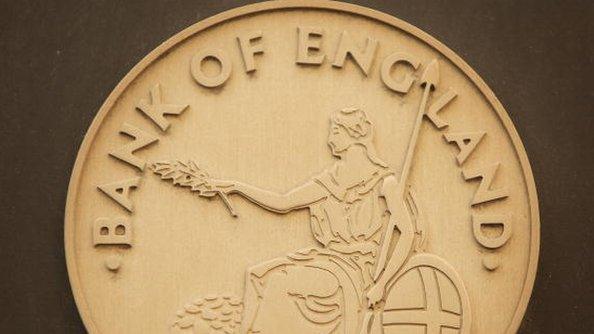Banks reduce loans, in spite of Funding for Lending
- Published
Treasury Minister Greg Clark: "This is an effective scheme"
The number of loans being offered by banks has continued to fall in spite of the Funding for Lending Scheme (FLS).
The scheme, which began in August last year, was designed to encourage banks to lend more money, both to individuals and businesses, and boost the economy.
But the Bank of England has announced that net lending fell by £2.4bn in the final quarter of last year compared with the previous three months.
Business Secretary Vince Cable said the scheme may need to be "adapted".
"It is working in some areas with some of the new banks," he told the BBC.
"But it isn't yet countering the very negative trend, the very conservative lending patterns that the banks in general are promoting in relation to business."
Mr Cable said he would be speaking to the Bank of England, which operates the scheme, to see how it could be improved.
'Takes time'
The Bank of England said the scheme, which had so far provided £14bn of funding to banks, had been slow to take off because banks had to scrutinise and approve loan applications.
"It takes time for reduced funding costs to feed through to lending volumes, given the typical lags involved in the loan application, approval and drawdown process," the Bank said.
And it claimed that banks were already lending more than they otherwise would have done, had the scheme not been in existence.
Shadow chancellor Ed Balls called the figures "deeply disappointing" and said it was time the government came up with some alternatives to boost lending.
"We are calling for infrastructure investment to be brought forward, a British Investment Bank and a national insurance holiday for small firms taking on extra staff," he said.
In total, at least £70bn is being made available to banks at reduced interest rates, but only if they guarantee to lend that money on to the UK's small and medium-sized businesses, as well as individuals.
'Slamming on the brakes'
The data from the Bank of England shows strong variations between different banks.
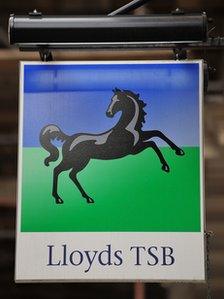
Lloyds is among the banks that has cut back on lending
Lloyds, which is 40%-owned by the taxpayer, cut back its lending by more than £3bn during the last quarter of 2012. Santander, reduced its lending by slightly less, £2.8bn.
But Barclays increased its lending by £1.8bn.
Nationwide, which has a big mortgage book, increased its lending by £1.7bn.
Chris Love, of the mortgage broker Mortgage Simplicity, said some of the banks were still trying to increase their reserves, rather than lend more money out.
"The data has been skewed somewhat by the activities of a few of the larger banks slamming on the lending brakes to bolster their capital bases," he said.
Lack of demand
New figures from the banks themselves confirm that lending to businesses is continuing to fall.
The British Bankers Association (BBA), which represents all the main banks, said lending to four million small and medium-sized businesses fell by £382m in the last quarter of 2012.
But it insisted that most loans that are asked for are approved.
The BBA said small and medium-sized businesses were sitting on large cash reserves and choosing to pay down their debts, rather than borrow more. In other words, fewer businesses wanted to borrow money.
"It is more of a demand issue, rather than a supply issue," a spokesman told the BBC.
And it claims that business owners are being put off applying for loans.
"Every time that people read that banks aren't lending, they don't apply."
But the Liberal Democrat peer Lord Oakeshott dismissed that idea entirely. "That is a pathetic excuse," he told the BBC.
"Many perfectly profitable, perfectly good businesses are absolutely being starved because they can't get the lending."
"The reason is that RBS in particular, and Lloyds, have been aggressively shrinking their balance sheets and sucking money out of British business," he added.
Homebuyers benefiting
In recent weeks, there have been some signs that Funding for Lending was feeding though into the mortgage market, thus helping to cut the price of home loans.
Labour's Chris Leslie: "Exceptionally disappointing figures"
Previous figures from the Bank have suggested that average rates have fallen to 3.53%, in January, as a result of Funding for Lending.
According to the Treasury, a two-year £100,000 mortgage with a 10% deposit is £1,000 cheaper in the first year than before the scheme started.
But lending to businesses has shown little sign of revival, with the industry saying it will take longer for FLS to feed through into business loans.
Last week, the Bank's deputy governor, Paul Tucker, admitted that the majority of loans funded by FLS had gone to homebuyers rather than small and medium-sized businesses.
Speaking to MPs on the Treasury Select Committee, he hinted that the Bank was considering "extraordinary" policies to encourage more business lending, including the idea of charging High Street banks a negative interest rate.
This would encourage banks to lend cash to small firms, rather than pay to deposit it with the Bank of England.
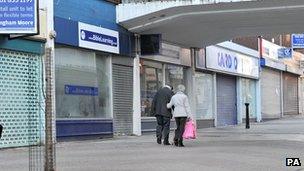
It is being claimed that banks are increasingly reluctant to lend to retail businesses
Shops hard-hit
It is also being claimed that the retail sector has been unduly hit by a failure to grant business loans.
Accountancy firm Wilkins Kennedy LLP said banks had cut the amount they lent to retailers by 5.7% in the year to the end of December 2012.
Over the last three years, it said loans to High Street shops had fallen by more than 18%.
Recent casualties in the High Street have included Comet, Jessops, Blockbuster and Republic.
"The recent retail sector insolvencies will have added to the view amongst banks that they are still over-exposed to this struggling sector," said Anthony Cork from the firm.
- Published29 May 2014

- Published22 January 2013
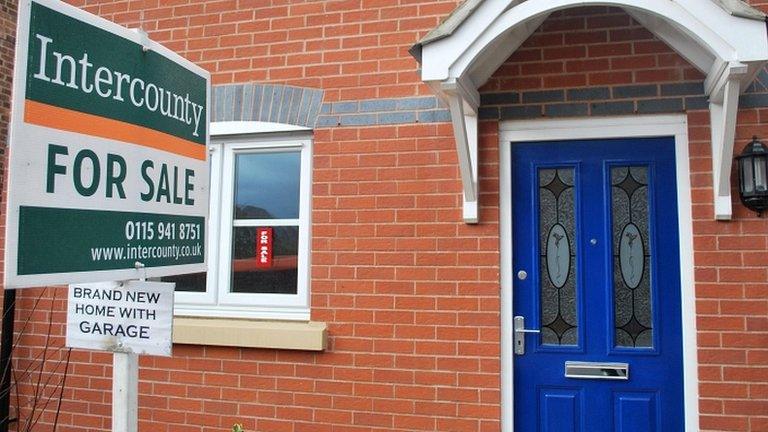
- Published26 February 2013
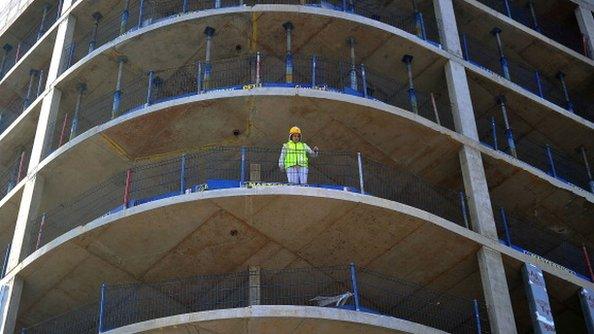
- Published20 February 2013
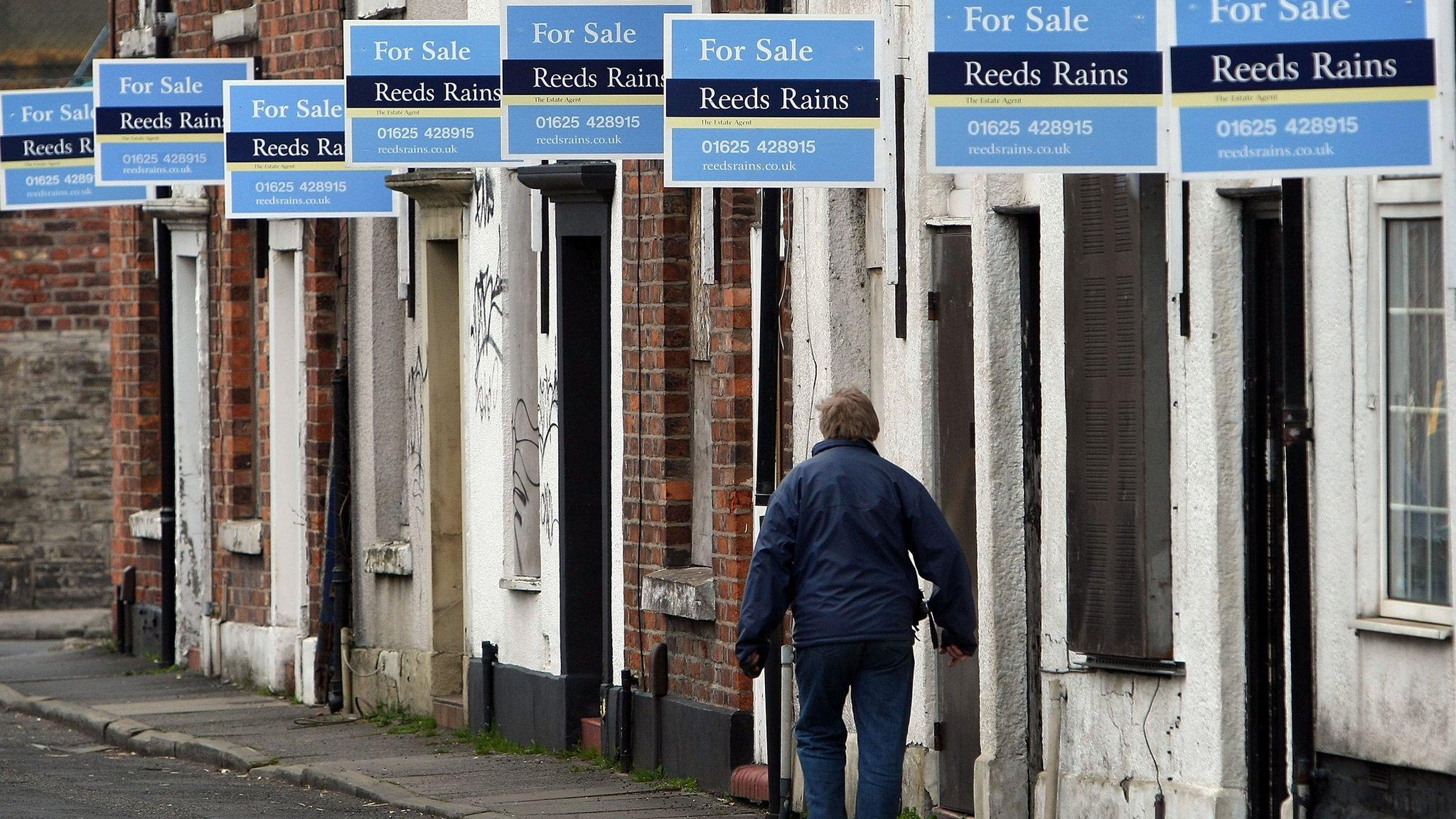
- Published26 February 2013
